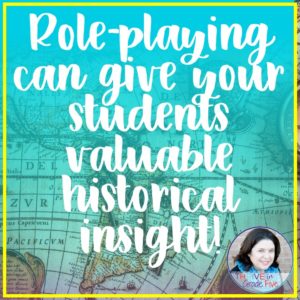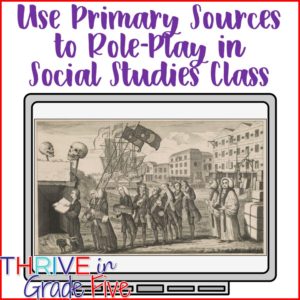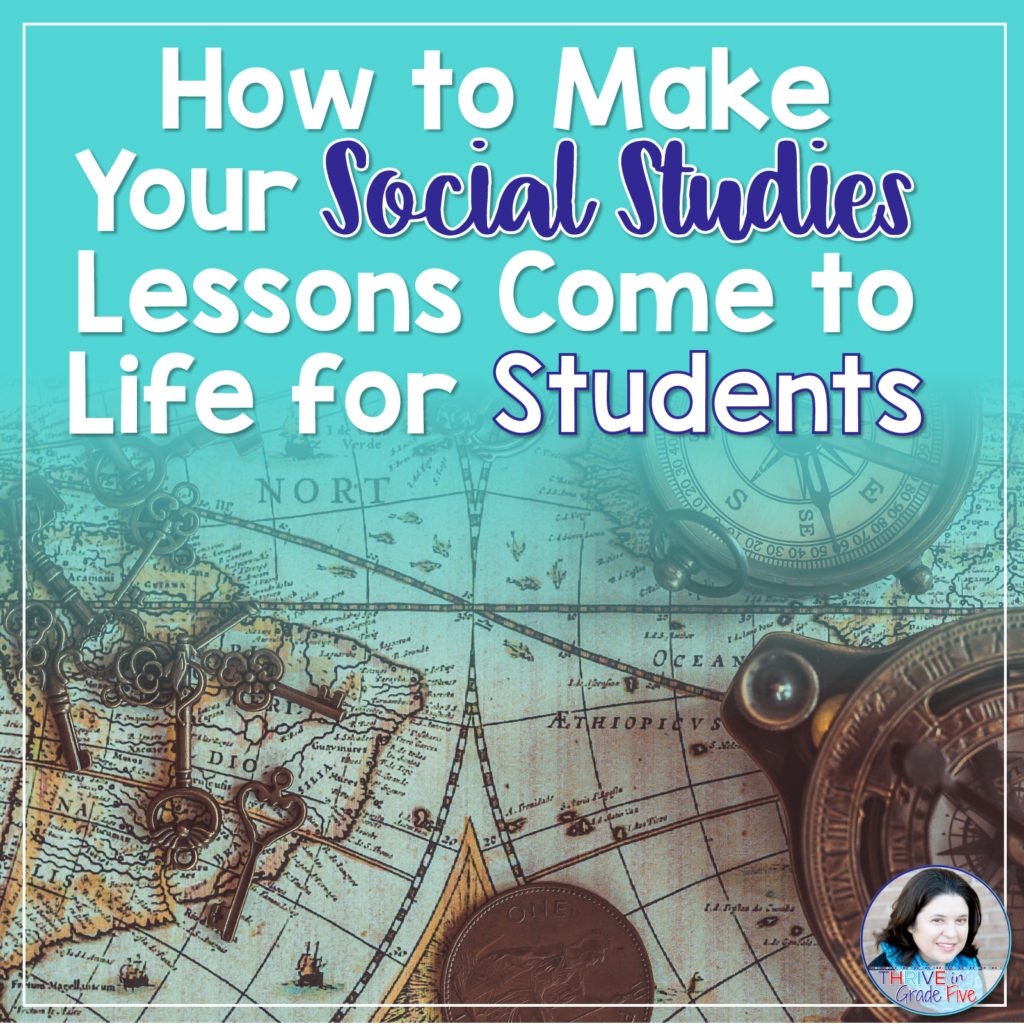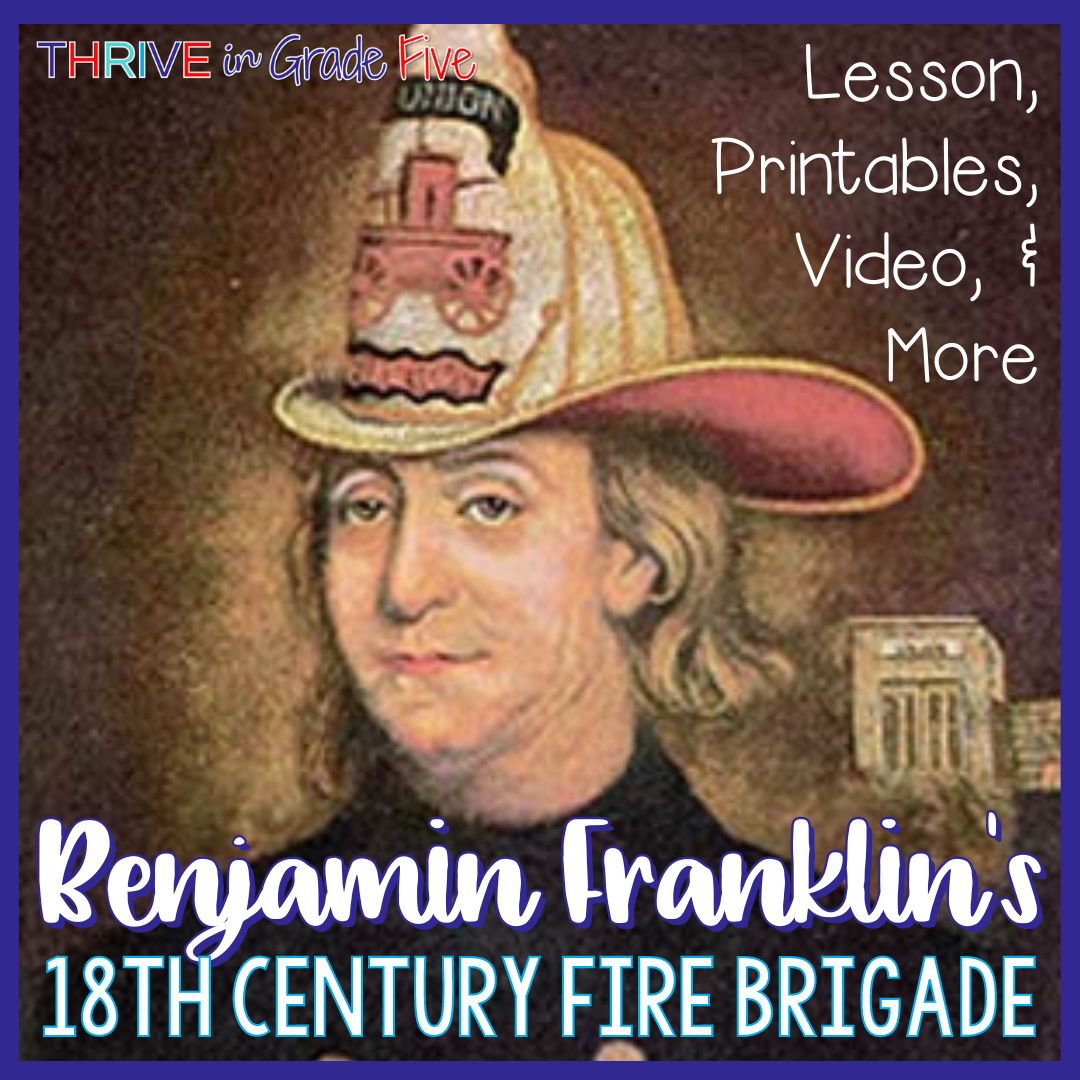Teaching Social Studies is so much more than dates, people, and events of bygone years. History can inspire students, impart valuable lessons, and help students to think critically.
If you are hoping to breathe new life into your same old lessons, I have five suggestions for you!
Making Social Studies come to life in your classroom will pay dividends for you academically and in your students’ attitude toward learning.

Tell Stories in Your Social Studies Class
I have never met a human, whether child or adult, who would turn down the chance to hear an engaging story.
Hearing an interesting story touches your students’ minds and hearts in a way that a textbook passage cannot.
My favorite time to tell stories is when introducing a new historical figure, event, or concept. I like to tell a story to engage students in the topic and preview the information.
It’s fairly simple to find story material. Choose a topic or person to tell a story about, do a bit of research to learn some details, and then put on your acting hat to tell the story in an exciting way.
For more information about telling stories in your Social Studies class, please visit this blog post: The Importance of Telling Stories in Social Studies Class

Integrate Primary Sources Often
Primary sources are images and texts created by someone who lived through a time period or event.
Primary sources bring a layer of depth to a subject matter that a worksheet, lecture, or textbook never could.
Most of us don’t have the budget to purchase real primary source items, but don’t despair. There are so many, literally thousands, of primary source documents and images online that you can bring into your classroom with just a click.
I use several different websites to locate primary sources for my students. I would like to invite you to check out my two favorite sites:
Library of Congress – Search for primary source text and images from all eras of American history.
Mount Vernon Online Collections – This incredible free resource offers primary source objects in high-resolution. You can even show students an original set of George Washington’s dentures!
There are many organizers out there to help students examine primary sources. I generally follow these steps:
- Without giving any information about the primary source, I ask students to hypothesize what it is, what it was used for, and what it means.
- I give students time to examine the primary source and discuss it with their classmates.
- I tell students about the primary source and give them an opportunity to ask questions.
For more information about using primary sources in your classroom, please visit this blog post: Teaching with Primary Sources in Upper Elementary

Interactive Notebooks are a MUST!
Interactive notebooks are the best thing ever!
In these handy composition notebooks, students can take notes, write journal entries, add foldables, sketch, and so much more.
I love that students can look back in their notebooks all year long for review and measures of growth. They have all of the information right there! Their Social Studies papers are not stuffed in their desk or tossed into the trash, because the important stuff is in one handy book.
Do I ask students to complete some projects and work pages outside of their interactive notebooks? Absolutely!
However, all of my students’ notes and other important information stays safely in their interactive notebooks.
Students gain a sense of pride and ownership once they’ve worked in their notebooks for a couple of months. Their interactive notebooks become a treasured possession.

Consider Some Historical Role-Play
There are so many options for historical role-play.
You could ask students to read a primary source excerpt and create a skit to show its meaning.
Another option for historical role-play is to compare and contrast important historical figures and role-play a conversation they could have had based on what students know about their lives, actions, and personalities.
One of my very favorite role-playing exercises involves using primary source images.
Display a primary source image, like the Stamp Act Funeral political cartoon below. Ask for volunteer students to stand in front of it and try to make themselves look like the individual they are impersonating, including facial expressions.

When you try this with your students, you will notice that they really get into character! I ask them interview-style questions and I allow their classmates to ask them questions, within reason, of course.
Mimicking primary sources with role-play helps students to become more invested in the image and in the event it portrays.
The critical thinking that comes out of an activity like this makes my teacher heart flutter!
I must give you a word of caution: Although you need to teach the concept of slavery, never role-play any documents, images, or situations dealing with slavery. This topic is too sensitive and painful for role-play.
To learn more about teaching slavery in upper elementary, please visit this blog post: How to Teach 18th Century Slavery in Today’s Classroom.

Connect Social Studies Topics to Our Modern World
We can’t possibly relate history to our modern, 21st Century lives, right? Wrong!
There is so much that we can do, as Social Studies educators, to make the lessons of the past relevant to our students’ lives.
When teaching a new lesson or event, I always interject a way that students can think about history through modern eyes.
Here are some examples that I’ve used with my students:
Jamestown: Have you ever tried to do something really important but you didn’t think it through first? Was it a disaster or did it work out? Turn to your neighbor and share for one minute.
New England Colonies: Children were assigned chores at home, attended school, and had to learn to read using the Bible. Compare and contrast the lives of 18th Century New England children with your life today.
American Revolution/Taxation Without Representation: What if a class from the school across town was given the power to make rules for our class and assign work for our class? How would you feel about that?
Bill of Rights: You can literally open your news app any day and find a current event that relates to the Bill of Rights. This listing of our rights as Americans is literally the easiest thing for a Social Studies teacher to relate to students’ modern lives!
For more information about teaching the Bill of Rights, please visit this blog post: Making the Bill of Rights Applicable to Students’ Lives
I have a free resource to help you teach the difference between primary sources and secondary sources!

To receive this resource immediately, please enter your first name and email address below!







10 Comments
I LOVE the idea of teaching Social Studies this way. Social Studies has become my favorite subject to teach now that I’m in 5th grade. ALL your suggestions are GREAT, I can’t wait to start using them when I go back in 3 weeks. THANKS!!!!!
Thank you so much for sharing this, Susan! I wish you an amazing school year 🙂
I really appreciate your easy to implement ideas for teaching Social Studies.
You are so welcome, Pam! Thanks for taking the time to leave a comment!
Please send your free resource. I teach 4th grade Literacy and Social Studies.
Thanks!
Hi Sue! Please visit my blog post and scroll all the way to the bottom to see the sign-up form. I want to make sure you receive this freebie and all of the ones I will send in the future!
http://thriveingradefive.com/how-to-make-your-social-studies-lessons-come-to-life-for-students/
New to social studies! Glad I found you!
Hi Laurie! I’m glad you found me too! Best wishes for an amazing year in social studies!
i love your ideas
Thank you, Clara! I appreciate you taking the time to comment!